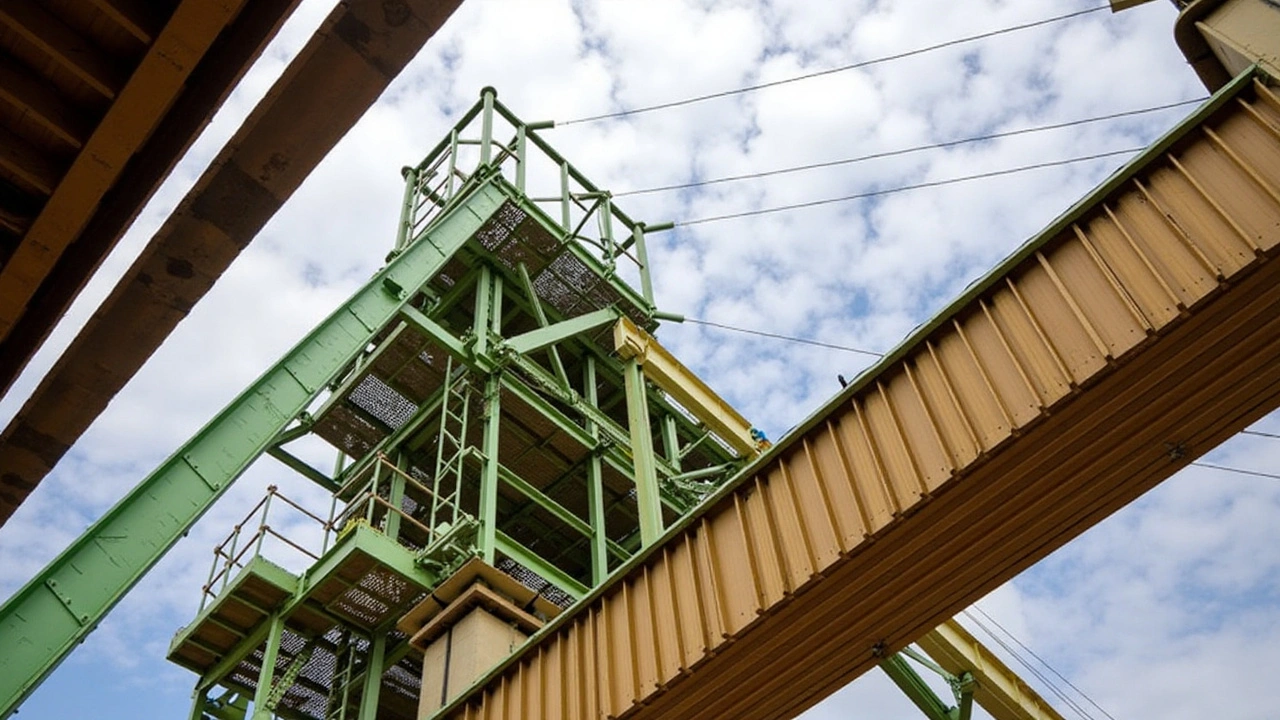Sibanye-Stillwater's Bold Move: Going Solo in Negotiations
In a bold move that could reshape labor negotiations within the South African gold sector, Sibanye-Stillwater, one of the country's largest gold producers, has opted to conduct wage negotiations independently, departing from the traditional collective bargaining methodology. This strategic decision comes after the mining giant faced a series of unsuccessful dialogues with labor unions, yielding no mutual agreement despite months of intensive discussions. This move not only highlights the company's resolve to pursue its objectives but also potentially marks a watershed moment in the mining industry, which has traditionally operated under an umbrella of collective agreements. The outcome of these negotiations could reverberate throughout the gold sector, influencing future labor relations and operational costs. As other companies observe the unfolding scenario, this could prompt a paradigm shift in how wage-related negotiations are conducted, towards more company-specific frameworks.
Historical Context: The Collective Bargaining Framework
Collective bargaining has long been the linchpin of labor relations within the South African gold mining sector. This approach, which pools together various gold producers and unions into a unified dialogue process, aims to set standardized wages and benefits across the industry. This system has been instrumental in facilitating discussions and maintaining some semblance of harmony between labor force demands and industry capabilities. However, in recent years, the growing impatience from labor unions over perceived injustices in wage offers has been increasingly conspicuous. The interplay between unionized labor's demands for improved wages and conditions, and mining firms' efforts to manage costs amidst fluctuating gold prices, creates an environment fraught with complexities and challenges.
Labor Demands and Company Offerings: Points of Contention
At the heart of the stalled negotiations between Sibanye-Stillwater and the unions lies a fundamental discord over wage increments and worker benefits. Sibanye-Stillwater’s proposal to increase wages for surface and underground workers by R1,070 during the first year, R1,100 in the second year, and R1,150 in the third year underscores their efforts to provide tangible growth in earnings relative to their 2021 offer. Despite these increments, union representatives have decried these figures as inadequate, labeling the offers as 'insulting' to the workforce, which is seeking more substantial raises and enhanced benefits reflecting the labor's contribution to the company’s profitability.
The Impact on Labor Dynamics
The decision by Sibanye-Stillwater to disband from the collective process and seek an individualized agreement has been met with both skepticism and intrigue. Key stakeholders remain committed to understanding how this new model could affect not only the company’s internal dynamics but also the wider mining industry labor relations. If successful, this move could empower other companies to adopt similar strategies, potentially leading to more focused and flexible negotiations. However, it also raises concerns about the erosion of unionized strength and might complicate collaborative dialogue efforts aimed at addressing industry-wide issues like health and safety standards.
Potential Industry-Wide Shifts
Such a shift in negotiation tactics by Sibanye-Stillwater is likely to be closely monitored, not only by other players in the South African gold mining industry but also by international counterparts. As global demand for precious metals continues to fluctuate with market trends and geopolitical influences, the ability for companies to nimbly manage labor costs while maintaining efficient operations is crucial. Standing as a potential antecedent to broader industrial changes, this move could inspire a reevaluation of collective versus individual strategies in several sectors grappling with similar labor challenges.
Conclusion: Awaiting the Ripple Effects
All eyes are on Sibanye-Stillwater as they navigate these newly charted waters. The company’s decision to negotiate wage agreements independently is more than just a tactical maneuver; it is a definitive declaration regarding modern labor strategies in a historically tumultuous industry. Should these negotiations result in favorable terms for all parties involved, it could open a new chapter in wage negotiations, encouraging a wave of tailored, company-specific agreements and potentially altering the landscape of labor relations within the gold mining sector. The outcomes of these talks will likely serve as a crucial benchmark for other companies evaluating the viability and sustainability of independent negotiation approaches.

Dinesh Gupta
November 8, 2024 AT 14:24Shalini Ambastha
November 9, 2024 AT 05:48Amanda Kelly
November 10, 2024 AT 18:39Jessica Herborn
November 11, 2024 AT 23:29Lakshmi Narasimham
November 13, 2024 AT 20:18Madhuri Singh
November 14, 2024 AT 05:57Amanda Dempsey
November 15, 2024 AT 01:20Ruth Ellis
November 16, 2024 AT 06:07Peter Novák
November 17, 2024 AT 06:55Siphosethu Phike Phike
November 18, 2024 AT 18:20Mitchell Ocran
November 20, 2024 AT 06:11Todd Gehrke
November 21, 2024 AT 16:51Allison Brinkley
November 23, 2024 AT 06:04